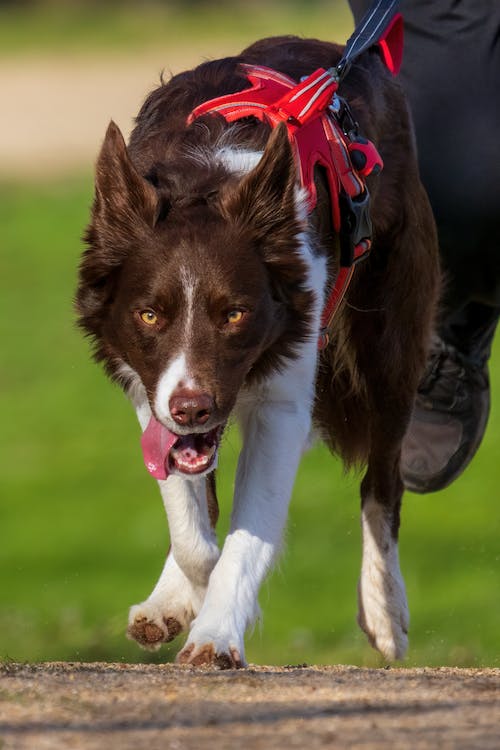Originally bred as a water dog, the Wetterhoun now makes a superb guard dog and family companion. This dog loves its people and enjoys human companionship, the same way his family relishes his presence. He has a persevering and strong-willed nature but can excel in different sports if treated with patience and extra effort. The breed is still rare, even in his homeland. Yet, with a rich history and incredible character, the Wetterhoun rightly deserves to be better known.
Origins of the Wetterhoun
The Wetterhoun traces his roots in Friesland, Netherland, located in the northern region of the country. The breed is considered a landrace dog, which means it has been developed without any official registry. Without a formal registry, the dog breeds used for its development are unknown but are believed to include Frisian dogs, gypsy dogs, and water spaniels.
The Wetterhoun was used as watchdogs for retrieving game birds and, more importantly, for hunting otters and fitch in the water, predators deemed a threat to the local fishing industry.
Like all other European dog breeds, Wetterhoun’s number plummeted during World War II. Thankfully, Dutch dog fanciers saved the Wetterhoun from going into oblivion.
One of them was Jan Bos, who led the efforts to preserve and have the breed recognized. He invited breeders and owners to attend the first inspection days, and their dogs were put into hunting tests. All dogs who passed were listed in an appendix and serve as the standard of the future purebreds.
In 1943, the Dutch Kennel Club recognized the breed. While not fully accepted by the American Kennel Club, the Wetterhoun was approved for its Foundation Stock Service program in 2019. The breed’s name was derived from the Dutch word “Wetterhûn,” which means “water dog.”
Characteristics of the Wetterhoun
Height: 21.5-23 inches
Weight: 50-75 pounds
Life Expectancy: 13 years
Hypoallergenic: No
The Wetterhoun is a medium-sized dog, with a relatively thicker frame than average dogs. His expression is often described as “stern,” given its hefty skull, a broad forehead, and small oval-shaped, slightly-slanting eyes. The nose is well-developed, while the muzzles are straight, ended by tight-fitting lips. While he is not a Spaniel, he also possesses drop ears, which is moderately long, low set, and flat close to the head. His long tail either curling up to the side or over his back.
But, one of his most conspicuous features is his coat. It is dense, with tight curls over his body and ears, but going smoother towards the head and the paws. It is coarse to touch but can also be greasy due to the coat’s natural waterproofing. Its common colors include solid brown, solid black, or either color with white markings.
Despite his built and grim appearance, the Wetterhoun is a warm-hearted and friendly dog that wants to be with its people. He goes along well with children and accepts other dogs and pets with no issues, provided that he is treated politely and with respect. However, he is wary of strangers, making him an excellent guard dog.
The Wetterhound is not a barker yet reliable, brave, and alert. He will use his voice to warn his families of danger. While generally gentle, expect him to turn into an aggressive dog when he sees any threat. He has excellent instincts and is willing to sacrifice himself to protect his beloved humans.
Brilliant but somewhat independent, Wetterhoun learns quickly but may refuse some commands, especially if he is not dealt with calmly. He has a sensitive side and will respond poorly to harsh punishment or treatment. If given a kinder approach, he will do his best to please his owner.
Nevertheless, what the Wetterhoun is happiest at is to be with its owners. He loves to play and with his vigor, humans are often the first to tire. Going outdoors would also please him, checking from time to time to ensure that his family is still around.
Caring for the Wetterhoun
The Wetterhoun only needs minimal grooming. His coat is naturally oily and waterproof. Brushing him once to twice-per-week can suffice, while bathing is rarely necessary. Seasonal flea control may be needed, but professional grooming rarely becomes a necessity. Meanwhile, eyes and ears should be cleaned regularly to avoid dirt build-up and infections. Then, nails should be trimmed every couple of weeks, and teeth must be brushed regularly to prevent gum disease.
As an active dog, Wetterhoun needs a great deal of exercise. Of course, it should involve you. He enjoys many activities, such as swimming, tracking, and retrieving. But, with a high prey drive, he should be kept on a leash or inside a securely fenced yard during exercise and play sessions.
Like many other working breeds, the Wetterhoun is considered to be healthy, and does not suffer in any breed-related health condition. He would do great on high-quality dog food, either home-prepared or commercially-manufactured, as long as it is under your vet‘s approval and direction.

